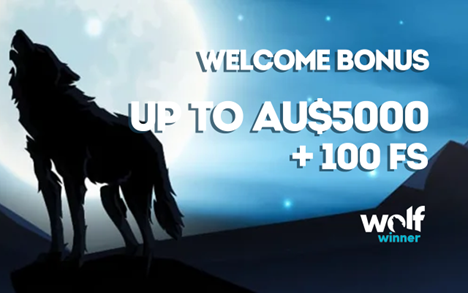Such online communications have changed formerly personal hobbies into digital communal activities. Players no longer sit quiet around tables. They make connections with viewers, respond to chat and create cult-like followerships.
The Rise of Streamer-Driven Card Culture

Live streaming changed card games into a worldwide spectacle. Games such as Poker, Uno, Blackjack, and collectible card games (CCGs) like Magic: The Gathering and Hearthstone have been revived by creators. Streamers describe games, express emotion and form drama in real time, instead of static tutorials of silent replay.
This shift has brought several effects:
● Accessibility. New players learn by watching others. Strategies become clearer when streamers break down their moves or discuss probabilities aloud.
● Entertainment Value. Even non-players tune in for personalities, jokes, and reactions. The game becomes part of a broader content experience.
● Community Growth. Stream chats allow instant feedback, support, and friendly competition. Many channels even host viewer tournaments or challenge sessions.
Social streaming also humanizes the experience. Viewers watch the highs and lows—bad beats, surprising comebacks, clever bluffs—not as dry statistics but as relatable stories.
What Funky Time Offers
Streaming does not confine itself to usual cards. Live-dealer casino games have become a mix that combines the hype of a television show and interactive game action. Among such areas is the Funky Time live dealer show. This vivid, disco styled game bases the wheel of fortune game and modernizes it with four fun bonus games as well as play in real-time. It provides access to main strategy tutorials, demo modes for practice and all the actual statistics in the game in the most convenient and clean UI. It does not matter whether you play in the demo mode to check your strategy or explore the frequency of wheel segments, Funky Time live dealer experience offers players a number of tools that help them feel less insecure. It is made with new interested users in mind as well as with hardcore gamers that want to understand where to spend their money and win, as easy navigation, clear betting options, and explanations of gameplay scenarios are provided.
From Spectators to Participants
One major shift in card-game culture is the blurred line between viewer and player. Social streaming platforms encourage participation beyond mere observation. Fans send suggestions, vote on moves, or share custom deck ideas. In some cases, chat input directly influences what happens on screen.
Here’s how stream-based communities build involvement:
● Real-Time Interaction. Streamers ask questions, explain decision trees, or even crowdsource moves from viewers.
● Channel Rewards. Loyalty points, badges, or giveaways reward frequent viewers and foster long-term engagement.
● Subcommunities. Discord servers and forums often emerge around popular streamers, where users continue the discussion, review plays, or trade cards.
This participatory model creates loyalty not just to the game, but to the stream and its community. Viewers feel seen. Their comments shape the narrative. Their reactions fuel the mood. As an example, when streaming a high stakes Poker hand on Twitch, a streamer can take a moment between his moves to discuss his bluff. The spectators respond, too: some applaud the hazard, others should offer another line. Such situations establish shared knowledge and enhance relationships with one another.
New Challenges and Evolving Norms
As card-game communities migrate online, they face new issues. Chat moderation becomes essential to keep discussions civil and inclusive. Intellectual property disputes arise over shared decklists or copied strategies. The pressure to perform on camera also impacts mental health. Still, many creators embrace transparency. They post wins and losses. They explain mistakes. This honesty fosters trust and sets healthy expectations for newcomers.
Another trend is the hybrid role of influencers. Some streamers become de facto educators, while others partner with publishers, casinos, or online platforms. Sponsored streams, product demos, and affiliate links now blend with authentic gameplay. As monetization expands, the line between entertainment and marketing must be managed with care. The best communities remain anchored in authenticity. When streamers prioritize the game, the people, and their own enjoyment over gimmicks, the audience follows.
Conclusion
Old-school card games were often played behind closed doors. Today, they thrive on open platforms. From professional Poker streams to experimental live-dealer hybrids like Funky Time, digital spaces have turned spectators into collaborators. These modern communities offer more than just games. They offer stories, friendships, rituals, and shared experiences. Streaming brings the table to everyone—no matter the time zone, skill level, or device. And as more people watch, learn, and engage, the future of card games looks more connected than ever.
FAQ
Why do people watch card games online?
They enjoy learning from skilled players. Some follow for fun, others watch to improve their game.
How does streaming change how we play?
Players explain their moves and share their thoughts live. This makes the game easier to follow and more exciting.
Can beginners join these communities?
Yes. Many streamers welcome new viewers and offer simple tips.
Do streamers earn money from card games?
Some do. They get support through donations, subscriptions, or brand deals.
Is it safe to play games like Funky Time online?
As long as you use trusted platforms, it’s safe. Funky Time offers free demo play and helpful guides.
What gear do I need to stream card games?
A decent webcam works. Grab a mic too. The Internet must stay stable. Then install OBS—it’s free and gets you rolling fast.
Can I learn real strategies by watching?
Absolutely. Many streamers explain odds, tactics, and decisions in real time.
Do streamers only play for fun?
Not always. Some aim to teach, others focus on winning, while many mix both.
Is social streaming replacing in-person games?
No. It adds a new layer, but many still enjoy face-to-face play.











— Kommentare 0
, Reaktionen 1
Sei der erste der kommentiert